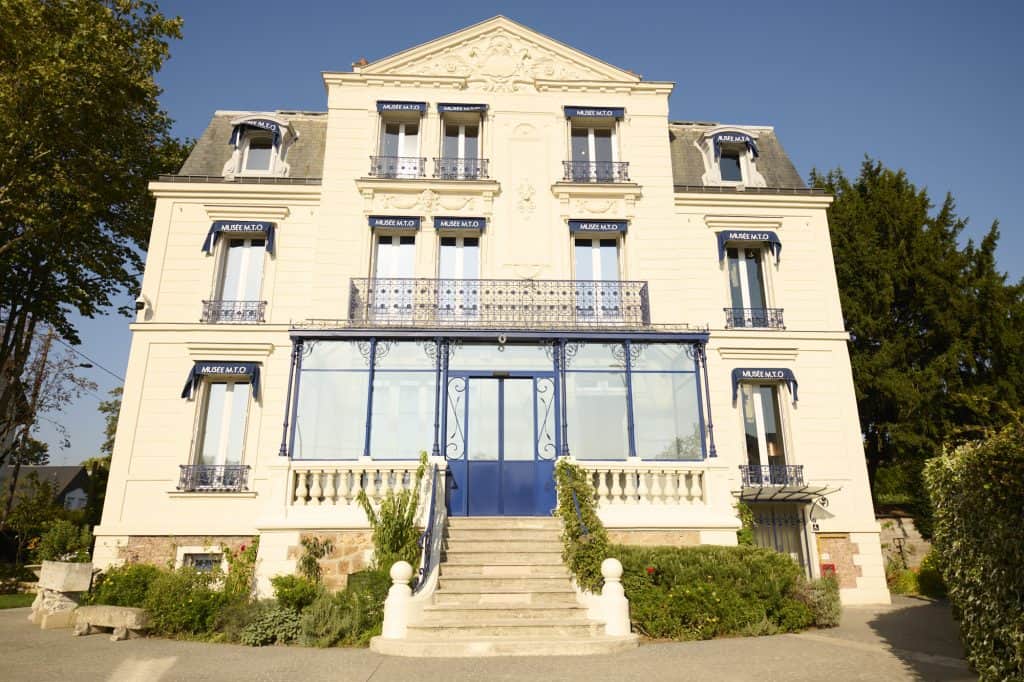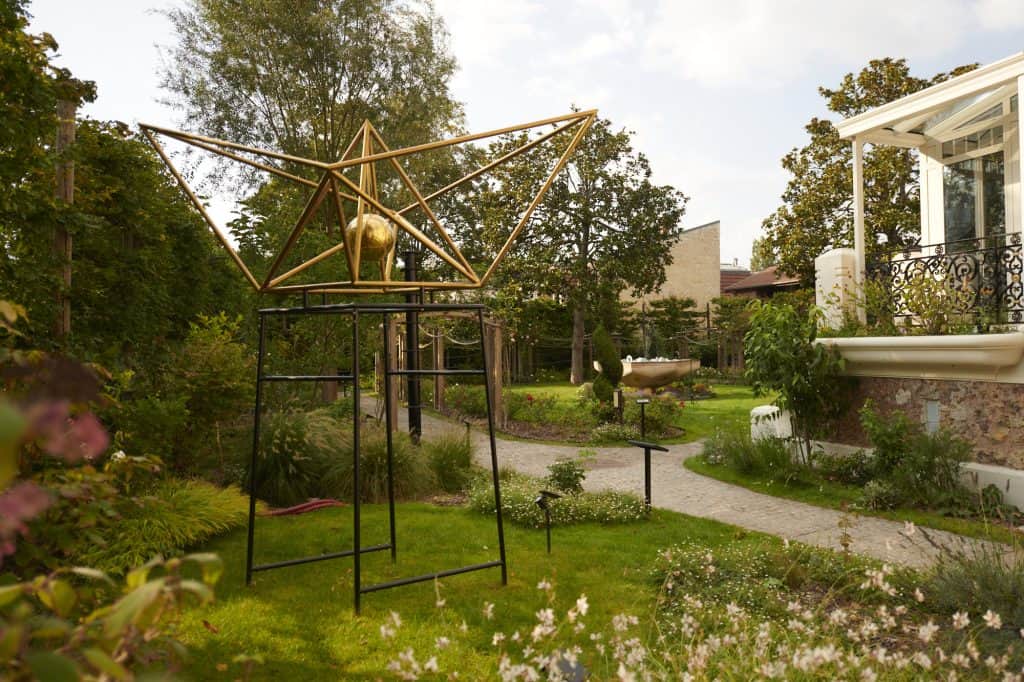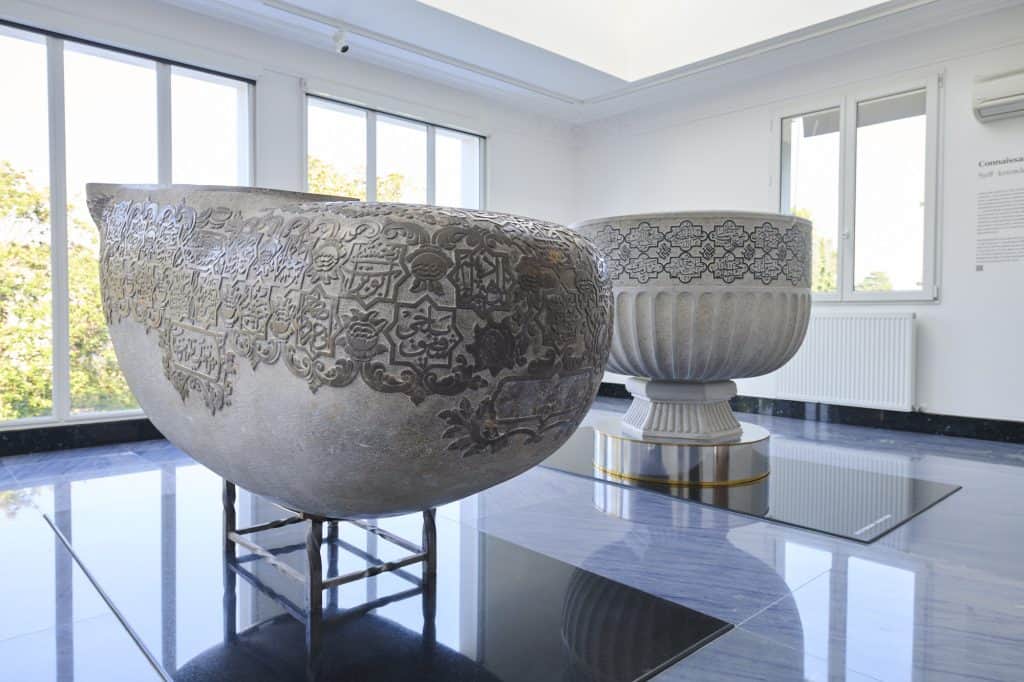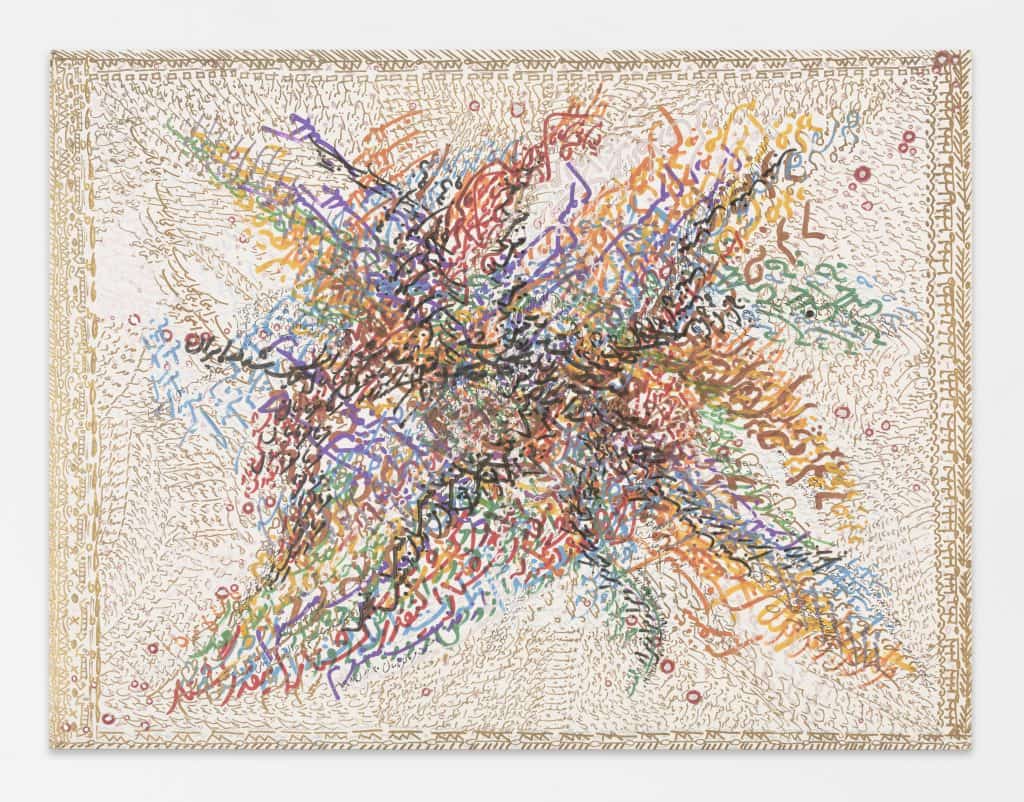By Lianne Kolirin
When Hazrat Shah Maghsoud Sadegh Angha, the Iranian Sufi master, poet and scholar, died in 1980, he was mourned by Sufis around the world.
But now, four decades after his passing, Shah Maghsoud can be found in a restored 19th-century mansion in a quiet Parisian suburb, delivering a lecture on unity.
Seated in a warmly decorated office, typical of 1970s Iran, and dressed in a traditional Sufi cloak, he speaks about eternal life as he delivers his sermon in his native Farsi.
He is a hologram and AI has helped to resurrect him to deliver a lecture he gave while spiritual leader to the Sufism order, which traces its roots back 1,400 years.

The arresting feature is central to a new museum in Paris dedicated to Sufi art and culture — an international first. It is set on the banks of the Seine, but far from the hustle and bustle of the French capital, in the northwest suburb of Chatou, which offers a calmer pace of life.
That, say those behind it, was part of the point. Paris is the art capital of the world, but establishing the new museum here had to also be balanced with central tenets of Sufism.
Sufism, often referred to as the mystical dimension of Islam, can also be described as a path towards inner knowledge. Love is key to Sufi teachings and followers embark on an inner journey of transformation and enlightenment which they believe will connect them with God, “the beloved”.
This they do through prayer, chanting and meditation, which is why the founders of the new museum went in search of a site offering an opportunity for quiet contemplation.
The museum, which offers magnificent views of the Seine, is housed in this grand building facing the Île des Impressionnistes — Impressionists’ Island — where Manet, Degas and Renoir all worked at their easels. Besides the three levels of exhibition space, the new museum also features a beautiful garden featuring flora typical of Persian gardens.

The idea for the museum was first floated in the 1970s by Shah Maghsoud — the 41st master of the Maktab Tarighat Oveyssi Shahmaghsoudi School of Islamic Studies — but gained momentum only in the 2010s, as a plan emerged to bring together a disparate collection of Sufi artefacts under one roof.
Speaking at a launch event in Paris, Claire Sahar Bay, a founding member and president of the museum’s board, said the institution is the result of years of dedicated planning following a “very clear” vision.
“We didn’t want to build a museum about the history of Sufism, on the social aspects; we wanted to explore, in depth, the art and culture. The approach that we were envisioning was a dialogue with other disciplines, more specifically contemporary art,” she said. Sufis had for centuries “enriched poetry, art, music”.
“Their contribution has been everywhere and they have used allegories, stories, fables to convey very subtle messages that are part of this spirituality and this all fuels the creation around them,” she said.

The museum’s permanent collection features decorative and everyday objects relating to Sufism, including sculpture, textiles, calligraphy, manuscripts and ceramic and mirror mosaics. Traditional music also features in a series of sound installations. Among the artefacts on display is a monumental granite sculpture of a kashkul, an alms bowl crafted from the coco de mer seed.
Centre stage is a rare khirqa, a traditional cloak passed between successive Sufi masters. It is made from rough wool to highlight the humility of the Sufi — a word some say originates from the Arabic word for wool, suf.
Also featured is a collection of 17th and 18th-century padlocks shaped like lions and peacocks. Padlocks are highly symbolic, as they are seen as a metaphor for the human heart which Sufism offers the key to unlocking.
“Being here today you may wonder how we talk about Sufism in a 21st-century museum,” Ms Sahar Bay said. “When we approach Sufism through the universal concepts of love, unity and harmony, we see that these principles transcend centuries.
“They take different forms in art and this is what we are seeking to offer here. We are seeking to offer a platform for exploration, for reflection, maybe for some it could be a place for contemplation. So, this is really for the visitor to engage with the topic here, at whatever they depth they wish, depending on how they want to experience this museum.”
The museum’s inaugural exhibition — Un Ciel intérieur (An Inner Sky) — features work by seven contemporary artists inspired by Sufism. Unfolding across three levels, it aims to evoke the inner journey pursued by Sufis, by starting on ground level and following a path to spiritual elevation.

The artists, many of whom have produced new works for the exhibition, are Bianca Bondi (South African, born 1986), Monir Shahroudy Farmanfarmaian (Iranian, 1922–2019), Seffa Klein (French-American, born 1996), Troy Makaza (Zimbabwean, born 1995), Chloé Quenum (French-Beninese, born 1983), Younes Rahmoun (Moroccan, born 1975), and Pinaree Sanpitak (Thai, born 1961).
Museum director Alexandra Baudelot, who curated the exhibition, said: “The museum creates space for dialogue between audiences and artists, for people of all faiths and none. Through the growth of our collection, diverse programmes, and collaborations with contemporary artists and multidisciplinary thinkers, we look forward to developing a wider understanding and engagement with the rich cultural expressions of Sufism through discovery, culture, and scientific research.”
To find out more visit the museum website

















